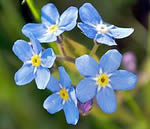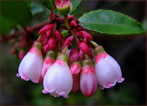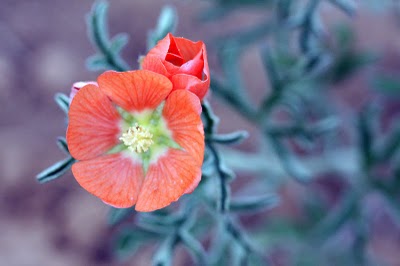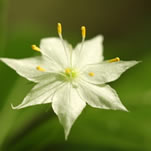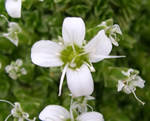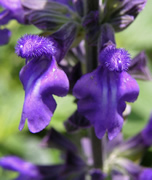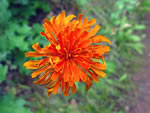Bee-Friendly Flowers
Planting Flowers that Attract Bees
Ruth O’Neill, Research Associate
Wanner Crop Entomology Lab, Plant Sciences & Plant Pathology
Honey bees, solitary bees, and bumble bees are useful for pollinating vegetable and fruit crops [link to page]. But beyond their economic utility, bees are fascinating animals to watch as they go about their daily routines of foraging and nest-building. Here are three ways to create a sanctuary for bees as well as many other pollinators.
1. Plant for abundance and diversity
Fortunately, most bees and many other types of pollinators are generalist feeders on a broad diversity of flower types, and there are plenty of winter-hardy flowering plant selections available for our region. You don’t need to be overly concerned about exactly what flowering species you plant; your strategy can simply be to plant a lot of different things.
You should certainly include at least some native plants (many are listed below). Native plants are less likely to be invasive than exotic plants, and having evolved locally they have established an ecological relationship with other native plants, and with native animals that may rely on them for food and shelter. For a listing of plant nurseries in Montana that specialize in native species, see this on-line list offered by the Montana Native Plants Society: http://www.mtnativeplants.org/filelib/212.pdf
However, bees will readily visit many cultivated non-natives. A diverse bee garden can include, for example, non-native small fruits, such as blueberries, as well as native plants like strawberries, raspberries, currants, and gooseberries. You can offer patches of nectar-rich forages that are non-native such as sainfoin and alfalfa, as well as natives like bird’s-foot trefoil. Many common garden herbs that are plentiful and important sources of nectar are non-native. These include thyme, oregano, basil, lemon balm, mint, marjoram, and clary sage. And while many of the native ornamental flowers make spectacular bee food plants, some notable non-natives can contribute as well (see list below).
2. Offer flowers of many different sizes and shapes
Most bees are generalist, foraging on a wide range of flower species. However, bees will naturally gravitate toward the types of flowers that are easiest for them to handle, and this factor varies according to their body size and how their mouthparts are shaped.
Bees are divided into short-tongued and long-tongued species. A bee’s tongue is like a long whip, with hairs projecting from the apical third or so. Short-tongued bees (Andrenidae, Halictidae, Colletidae) generally need flowers with shallow nectar access. Long-tongued bees (Anthophoridae, Apidae, Bombidae, Megachilidae) can access nectar in deeper flowers. The length of the tongue influences how quickly and efficiently the bee can work a flower to obtain the nectar. Flowers with deep tubular corollas such as twining honeysuckle, or long nectar spurs such as columbine, are an impossible challenge for short-tongued bees unless they are small enough to crawl deep inside the flower to reach the nectaries. On the other hand, these types of flowers are handled very nimbly and quickly by long-tongued bees. Long tongues are awkward on shallow flowers.
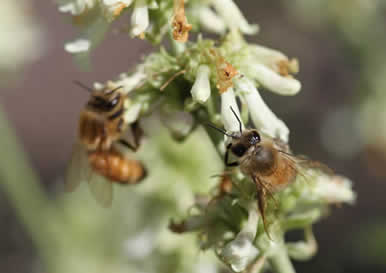
Honey bees on tubular yellow penstemon flowers
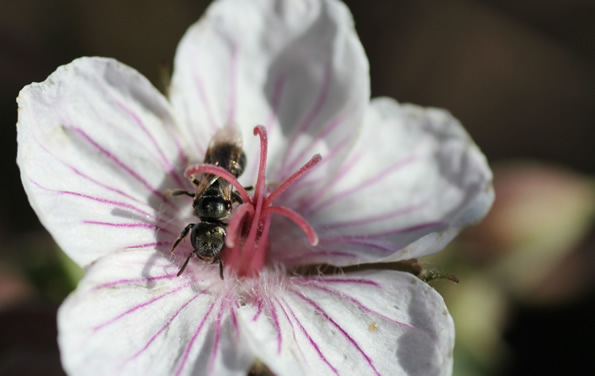
Lasioglossum (Dialictus), a short-tongued bee, on saucer-shaped sticky geranium flower.
Flower Shape |
Example |
|
|
Bell-shaped |
Common harebell |
|
|
Funnel-shaped |
Yellow bell, |
|
|
Trumpet-shaped |
Scarlet gilia, Ipomopsis aggregata |
|
|
Salverform, |
Mountain Forget-me-not, Myosotis asiatica |
|
|
Urn-shaped |
Mountain huckleberry |
|
|
Saucer-shaped |
Scarlet globemallow, |
|
|
Stellate, star-shaped |
Northern starflower |
|
|
Cruciform |
Sandwort |
|
|
Lipped |
Salvia sp. |
|
|
Lipped |
Elephant’s-head |
|
|
Ligulate, strap-shaped |
Orange agoseris |
|
3. Offer flowers throughout the growing season
Summertime blooms are normally plentiful if you have planted a diversity of flower species on your property. Commonly, however, there are not enough flowers available in early spring and late summer / fall.
Some good choices for spring flowering are: Willows, maples, linden, serviceberry, dandelion, crocus, calendula, borage, chokecherry, pussy willow, and leadplant.
Good fall choices include: Sedum, aster, Rocky Mountain bee plant, fireweed, goldenrod , Joe-pye weed, rabbitbrush, snakeweed, blanket flower, and several native species of thistle.
Some flowers don’t attract bees, either because they don’t contain sufficient nectar or the nectar is hard for them to reach. These include impatiens, begonias, chrysanthemums, marigolds, geraniums, grape flowers, and many cultivated roses. Red flowers are not often visited by bees unless lighting is very intense (for bees, red has a gray or black tone that blends into the background foliage under most lighting conditions. See http://www.ncbi.nlm.nih.gov/pmc/articles/PMC521733/ )
For more information on growing native plants in a variety of landscapes, visit:
http://www.nativeplantnetwork.org/




